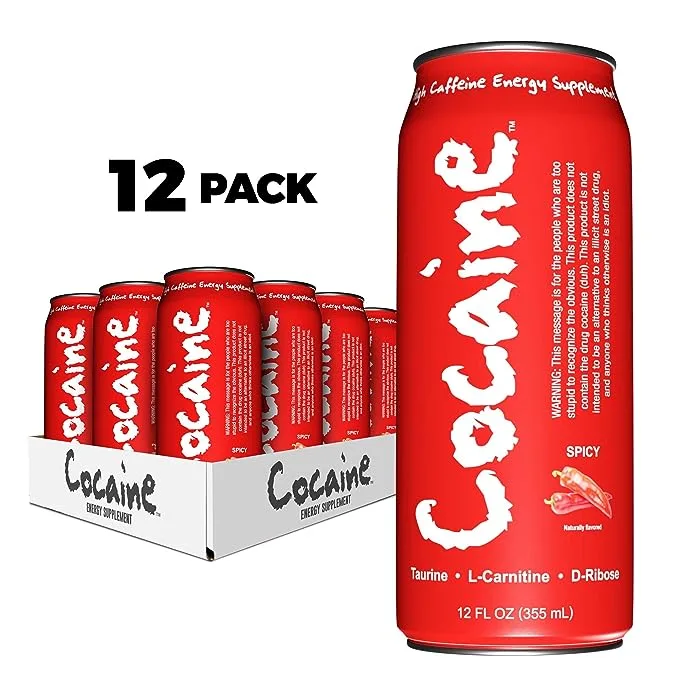Imagine sipping an energy drink that packs a punch like no other, delivering an electrifying burst of energy. Now, imagine that very drink being named “Cocaine.” Intriguing, right? Redux Beverages dared to push the boundaries by naming their energy drink after a notorious illegal substance. It is a story that grabs attention and raises eyebrows in equal measure.
Cocaine Energy Drink History
Energy drinks are all about boosting our energy levels to get through busy days. But when one comes with a name like “Cocaine Energy Drink,” you know there is more to it than just caffeine. The mastermind behind this unconventional move is Jamey Kirby, who believes that the name alone triggers a psychological energy rush before the can is even popped open. Cocaine Energy Drink was launched in September 2006 by founder Jamey Kirby with his wife Hannah under the umbrella of Redux Beverages company. This bold strategy certainly guarantees buzz, but it also stirs up debates about glamorizing illegal drugs.
As expected, the launch of Cocaine Energy Drink turned heads for both excited and concerned ones. The Food and Drug Administration (FDA) stepped in, worried about the drink’s association with an illegal drug and its sky-high caffeine content. Despite the warning label advising adults to consume it responsibly, the drink’s name and marketing raised a lot of questions.
Cocaine Energy Drink Caffeine Content
Cocaine Energy Drink proudly boasted that it packed a caffeine punch 350% stronger than Red Bull. With 280mg of caffeine packed into an 8.4 Oz (250ml) can, it joined the ranks of super-caffeinated energy drinks. While this caffeine kick promised a serious jolt of energy, it also sparked concerns among health experts about the potential risks of consuming such high levels of caffeine.
Cocaine Energy Drink Nutrition Facts

Cocaine Energy Drink Ban
Shortly after in April 2007, the drink was removed from store shelves in the USA after FDA warning emphasizing that Cocaine Energy Drink was breaking the rules. It was acting like a drug alternative and a health supplement at the same time, something that was not allowed. Redux reintroduced the drink in June 2007 under new label “No Name”. This new name was a smart move. It helped them play it safe and follow the rules better. The flashy and bold “Cocaine” name was replaced with something quieter.

Cocaine Energy Drink Re-launch
However, the No Name new name tag did not last too long and was changed back to Cocaine again in the beginning of 2008. After a regulatory scrutiny, Cocaine Energy Drink made its triumphant return. Redux Beverages managed to address the FDA’s concerns, and the drink was once again available for sale in the USA and a few international markets. However, its journey back was not without controversy, with critics questioning whether a product named after a harmful drug should even exist.
Ultimately, whether you are drawn to the edgy name or repelled by its associations, the choice to consume Cocaine Energy Drink should be a responsible one. Being mindful of caffeine content and potential effects is key. Like with any product, moderation is vital, and making decisions that prioritize your well-being is a smart way to navigate the world of energy drinks.

